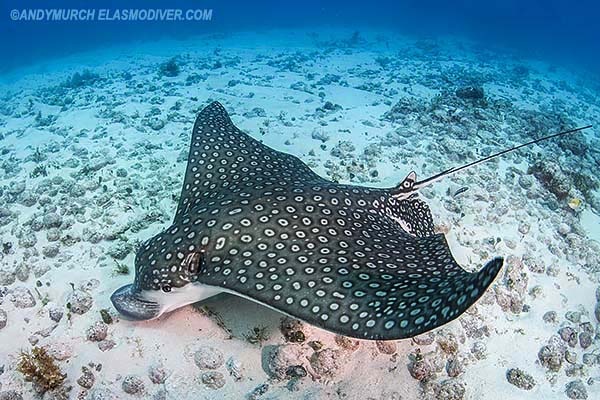|
|
|
SHARK INFO |
|
SHARK |
|
SHARK EVOLUTION |
|
|
|
SHARK DIVING |
|
SHARK DIVING 101 |
|
|
|
CONSERVATION |
|
|
|
PHOTOGRAPHY |
|
SHARK PHOTO TIPS |
|
|
|
RESOURCES |
|
|
|
WEB STUFF |
|
WHAT IS ELASMODIVER? Not just a huge collection of Shark Pictures: Elasmodiver.com contains images of sharks, skates, rays, and a few chimaera's from around the world. Elasmodiver began as a simple web based shark field guide to help divers find the best places to encounter the different species of sharks and rays that live in shallow water but it has slowly evolved into a much larger project containing information on all aspects of shark diving and shark photography. There are now more than 10,000 shark pictures and sections on shark evolution, biology, and conservation. There is a large library of reviewed shark books, a constantly updated shark taxonomy page, a monster list of shark links, and deeper in the site there are numerous articles and stories about shark encounters. Elasmodiver is now so difficult to check for updates, that new information and pictures are listed on an Elasmodiver Updates Page that can be accessed here:
|
|
_ |
WHITESPOTTED EAGLE RAY |
|
View all available whitespotted eagle ray images in the Shark Pictures Database
Common Names: White-spotted eagle ray, spotted eagle ray, Atlantic eagle ray.
Scientific Name: Aetobatus narinari
Synonyms: Aetobatus
guttatus (Shaw, 1804)
Family: Aetobatidae. Containing the single genus 'aetobatis'. Recently elevated to full family status. Previously considered part of the family myliobatidae.
Identification: A large eagle ray with a greenish-grey or yellowish-brown dorsum covered in white or bluish-white spots. Occasionally, spots may take the form of small white rings with dark centers (ocelli). Disc rhomboidal, wing-like, falcate. Anterior disc margins straight becoming convex towards free rear tips. Posterior margins of pectoral fins concave. Pectoral intersec with prominent square head at eye level. Rostral lobe (snout) wide and moderately long (much wider than in A.ocellatus). Caudal fins extend rearward beyond pectoral margin. Very long, whip like tail. Tail length 1.8-2.3 times disc width when intact. 1 to 2 tail spines. Mouth located ventrally. Teeth plate-like. Nasal curtain (upper lip) large, fringed and deeply notched centrally.
Size: Disc width to 230cm.
Habitat: Coastal. Reefs, sand flats and shallow bays. To at least 60m.
Distribution: Tropical Western Atlantic including the Gulf of Mexico and throughout the Caribbean Sea. Possibly also coastal, tropical Eastern Atlantic.
Diet: Feeds by plowing its flattened snout through the sand, scooping up buried invertebrates. Preys on Polychaete worms, bivalves, gastropods, cephalopods, shrimps and small fishes.
Reproduction: Ovoviviparous. Produces litters with up to 4 pups.
Conservation Status: the spotted eagle ray is listed as NEAR THREATENED by the IUCN. However, this is based on the incorrect assessment that Aetobatus narinari is a globally occurring species. The revised distibrution is far more limited (see Distribution above). The Western Atlantic population probably faces a considerably lower threat level. Whitespotted eagle ray populations in Florida are completely protected, while populations within the Caribbean are not fished commercially. Eastern Atlantic populations (if they are the same species) are probably under greater threat as subsistence fishing is more prevalent and protection is non-existent.
Photographs: Top image - Grand Cayman. Bottom image - Isla Mujeres.
Similar species: Recent genetic, morphological and parasitic study has split the spotted eagle ray into three distinct species that can be identified easily by range. The spotted eagle ray Aetobatis ocellatus is present in the Indo-West/Central Pacific region. The whitespotted eagle ray is confined to the tropical Atlantic including the Gulf of Mexico and Caribbean Sea, and the Pacific eagle ray inhabits the tropical Eastern Pacific coast and Galapagos Islands. Further studies may eventually split the central and western populations of A.ocellatus into two distinct species.
Reaction to divers: Somewhat shy and hard to approach. Easiest to approach when they are preoccupied with feeding.
Diving logistics: Commonly encountered by scuba divers and snorkellers in Florida, the Bahamas, Turks and Caicos and the Caribbean but unpredictable. The C58 Wreck in Cancun reliably attracts large schools of whitespotted eaglerays and can be dived year round. Visit SoloBuceo.com for more information.
Citations:
|























